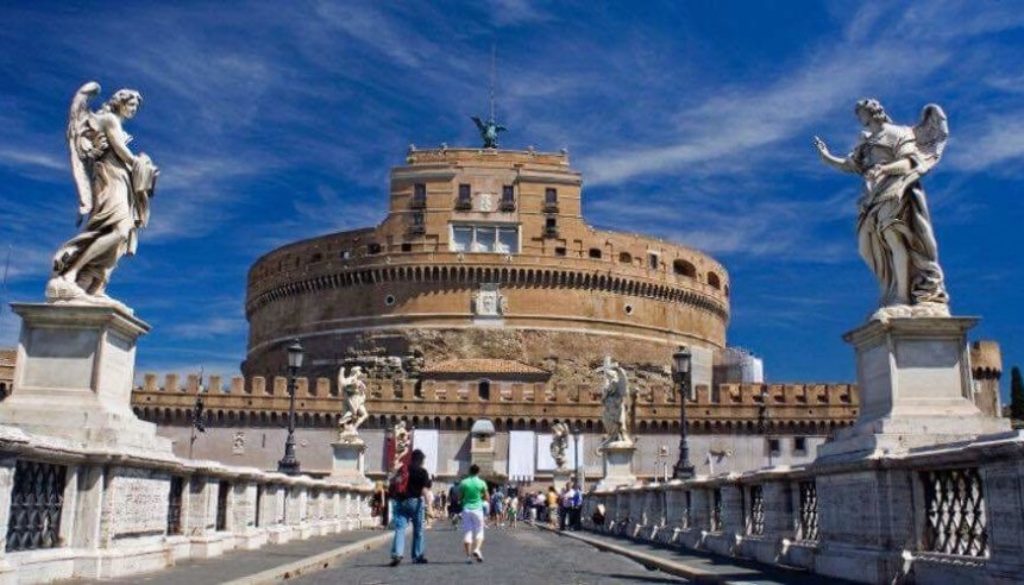Between past and present, Discover the lesser known churches of Rome
The Churches, one of the many and infinite symbols of Roma. In the capital there are many and each, from the most famous to the less known, has its own story to tell. Today we are presenting as the ones that if you're in Rome you can not miss.
Santa Prassede – Located near the Basilica of Santa Maria Maggiore in rione Monti. The main entrance of the Basilica, hardly ever used, is located in via San Martino ai Monti. The side entrance is located on the right side of the building on via di Santa Prassede, from which it takes its name. The Church was founded in the 9th century by Pope Paschal I the old “Titulus Praxaedis” the end of the fifth century. The Church takes its name from the Santa Prassede, sister of Santa Pudenziana and the daughter of Roman Senator Pudens, disciple of Saint Paul. An old legend says that Prassede and Pudenziana were killed because dedicated to bury the martyrs of the persecutions of Antoninus Pius in wells located in the grounds of the father. Beautiful mosaics within it, especially the one inserted inside the Chapel, so light as to be called “The garden of paradise”.

Santa Maria in Aracoeli – It was originally called S. Maria in the Capitol this church which stands on the highest peak in the Capitol and that inside one of the most venerated icons by the Roman people: the Holy child. Each 6 January with that little statue carved in wood of Gethsemane, the city is blessed. Unfortunately the current statue is a copy, the original was stolen in 1994 you never found. The original statue, Sixty centimeters high was carved in olive wood from the garden of Gethsemane at the end of the fifteenth century by a Franciscan who, lest you spoil it with a vague coloration, one evening, before going to sleep, begged the child inspire him; upon awakening he painted prodigiously statue. It is said that her lips become red when he was about to be granted a pardon and pale when there was no hope. In the 19th century was carried to the sick in a sumptuous carriage and still continues to receive letters from children all over the world. In the past had already been kidnapped twice but had always returned.

San Carlo alle quattro fontane – Located on via del Quirinale, San Carlo alle Quattro Fontane is dedicated to “SS. Trinity and Carlo Borromeo”, the milanese Cardinal of the 16th century canonized in 1620. The church building was entrusted to Borromini but took a long time, much that was completed by his grandson in 1667, the same year, i.e., where the great artist committed suicide: for this reason the small chapel in the crypt, It was reserved to him, remained empty because the Trinitarians did not accept to host a suicide and thus the Borromini was buried in the Church of St. Giovanni dei Fiorentini. The Church is popularly known as s. Carlino due to its small size, much that is said to be as large as a pillar of St Peter's dome.

Basilica di Santo Stefano Rotondo al Celio – Built in the 5th century is also in rione Monti. Run up to 1580 by Paolini Hungarians, the Church since then belongs to the Germanic-Hungarian Pontifical College in Rome. The basilica was built on the orders of Pope Simplicius (468-483) and the ancient building was adorned with mosaics and marble. Unfortunately the original decorations have gone completely lost. The building had a circular plan, formed originally by three concentric circles: a central space was bounded by a circle of 22 architraved columns, on which rests a drum; the central part was surrounded by two ambulatories lower ring: the innermost was surrounded by a second circle of columns connected by arches, now go into a continuous wall, While the outermost, passed away, It was closed by a low wall. To date the Church Basilica was erected and is Hungary's national.

Sant’ Ivo alla Sapienza – Located in the rione of Sant'Eustachio, It was built in the second half of the seventeenth century (among the 1642 and the 1660) by Borromini. For its artistic values, symbolic and technical, the building is regarded as one of the masterpieces of its architect, Baroque and the history of architecture in General. Sant'ivo alla Sapienza was difficult for Borromini theme, conditioned by the existence of the Palace and the courtyard already made that left roughly quadrangular space is very limited for giving rise to the Church. The end result is obtained with extreme purity and simplicity: the centralized plant, mixtilinear, draws a sort of six-pointed star, and the walls will follow the perimeter. Beautiful inside, the altarpiece with Saint Ivo patron of lawyers by Pietro da Cortona, unfinished for the master's death and completed by his pupils.


